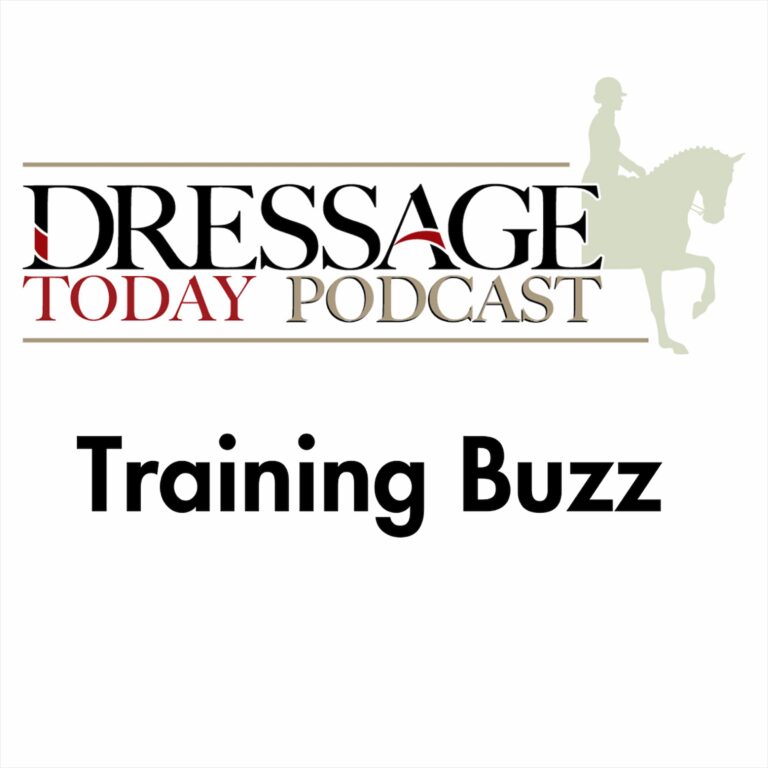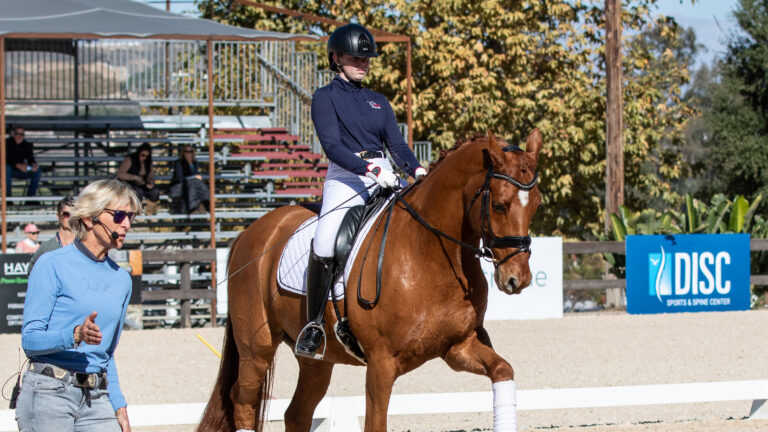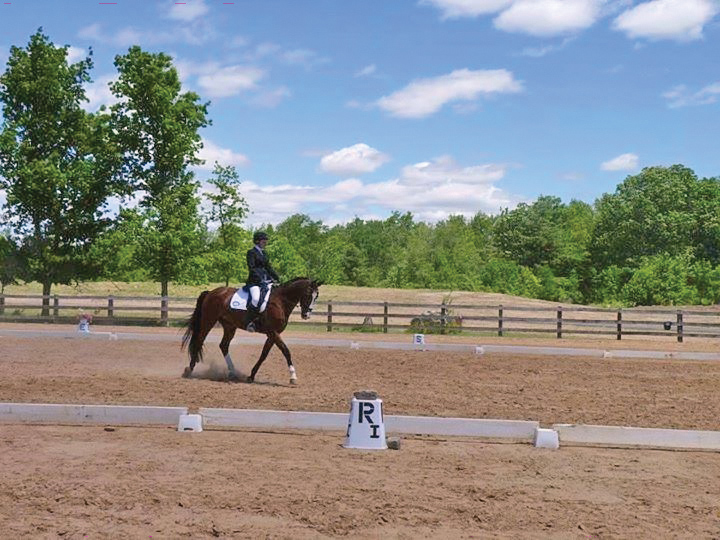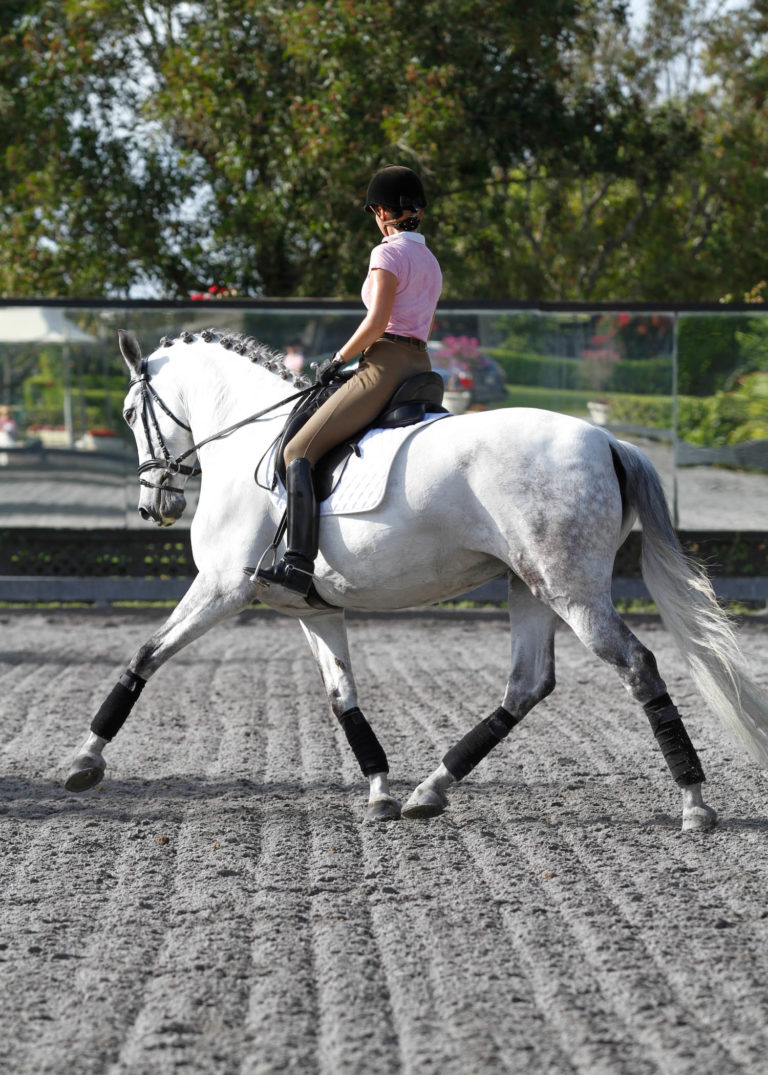I first heard the term “Flying Change Hell” when I was reading Janet Foy’s wonderful book “Dressage for the Not-So-Perfect Horse” and I felt this term very accurately describes the process of teaching flying changes. I have had some horses learn the changes relatively quickly, in a matter of weeks. Other times, it has taken upwards of a year to take the changes from nonexistent to confirmed.
I have experienced just about every frustration possible while teaching changes: late in front, late behind, no changing at all, violent leaps through the air, bolting, bucking and just about every possible combination of all of those you can imagine. Today I want to share eight ways to survive flying change hell so that you and your horse can come out on the other side unscathed!
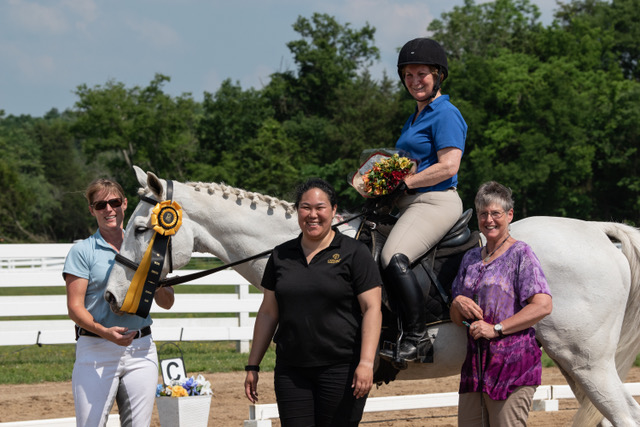
1. Get your prerequisites in order.
In the USEF dressage tests, flying changes are first required at Third Level. You can use Second Level as a guide to test your horse’s balance, throughness and straightness. Pay specific attention to the simple changes. This is the single most important element for setting yourself up for a positive flying change experience. The canter-walk transitions should be balanced and collected. The horse should lower the hindquarters, while the shoulder elevates and make the transition in a fluid manner, like a feather floating to the ground. The horse should land lightly.
In the transition from walk to canter, pay particular attention to the horse’s reaction as this will, in effect, be your flying change aid. If the horse is sluggish to the leg or stiffens against the hand, you will most likely experience the same thing in the changes, if they even happen at all. The horse must be reactive to the canter-depart aid. If he is not, work on this daily to improve reaction. Not only must the horse be quick to depart into canter when asked, he must also maintain throughness and straightness. Keep your outside rein steady. You want to feel the horse connect to the outside rein throughout the canter depart. Pay attention to the horse’s alignment, as any misalignments at this time will show up in the changes.
You need to be able to adjust the canter. The horse, again, needs to be reactive to the driving aid when you ask for longer strides and also be attentive to your half halt so you can shorten the strides toward a pirouette-type canter. Even though pirouettes are not required until Fourth Level, I like to start them prior to changes. Just being able to shorten and quicken the canter stride will help you prepare for the flying changes.
2. Maintain high standards and low expectations.
Keep your standards high. Make sure you are riding your horse actively forward, quick in the hind leg and you’re expecting the horse to carry himself in balance that is appropriate for this level. Be tough on the reactivity. If your horse is sluggish in the canter depart, repeat it until you have the feeling you want. Do not accept mediocrity in the basics. If you always allow a transition to be above the bit or slow to the leg, there will be no incentive for the horse to ever change. Keep your standards high, not only for your horse, but for yourself as well.
With this in mind, I would actually recommend you keep your expectations relatively low for what you will get in the way of flying changes, especially in the beginning. Flying changes, while one of the most natural movements we teach the horse, can be one of the most challenging to teach. There is not only a physical component, but a mental one as well, and each horse learns at their own pace. Praise small successes to build your horse’s confidence in you and in the process.
3. Remember it is not a linear process.
The journey through Flying Change Hell, unfortunately, is not a linear process. Beware the good ride! One day you may feel like you are having a breakthrough and that the horse finally understands it, only to be more frustrated the next day when it feels like you are back to square one. It can be beneficial to keep a journal throughout the process or video your training session once a week to see how things are progressing over time. The more your prerequisites are in order, the better chance you have of making this a smooth process.
It also varies dramatically from one horse to another. My first horse who I trained to Grand Prix took a full year to get the changes. He would give me just about any combination of wrong answers; everything except a clean change. Finally, when I was about ready to call it quits and bring in someone to help, he made the mental and physical connection and he had them. And once he had them, he really had them. His son, on the other hand, is 6 years old and I have asked him for a few changes, just in a playful manner and he has been on the aids and clean just about every time. The young horse is, by nature, a little hotter and more reactive so it is no surprise that he finds them easier. You need a certain amount of electricity in the hind legs to get the changes.
4. Leave your pride at the door.
Flying Change Hell can be very frustrating and intensely humbling. When you go ride after ride with little to no success, it is easy to feel like a failure. I have taught changes to many horses but I still encounter these negative feelings when the process goes on longer than I want or expect. Watch those expectations! Remind yourself when you are in the muck of it that it will get better. Stay present with the experience. Some days will be bad and some days will be good. Try to not let the bad days overwhelm you.
5. Recruit a friend.
A friend is not only nice to have around for moral support (we all need it!) but a friend with a good eye is extremely valuable when teaching changes. Even with mirrors, it can be challenging to stay focused on your horse and riding the flying change and also be able to watch the change in the mirror to ensure that it is clean. A friend can tell you what exactly happened in the change. A sneaky late-behind or late-in-front change can sometimes be hard to feel, especially if you are new to the process. A good grounds person can tell you if they are seeing a crookedness arise in the moments before the change or give you other feedback that can help you ride the next change more successfully.
6. Think outside the box and be flexible with your approach.
With my Grand Prix horse, what helped him the most was going out into the field. When we had more space to work with, he moved more freely and was more fired up, which led to greater success in the changes. With my sport pony, I used a pole on the ground quite a bit in the beginning to help him understand the change I was requesting in his body. You can try riding the change from a counter leg yield, from a counter canter on a circle, from a half pass, from a counter-canter renvers or just on a diagonal. Experiment with different approaches to see which works best for your horse. Just remember to properly straighten the horse prior to asking for a change, especially if you approach from a lateral-type exercise. Be creative with your lines and feel free to experiment. What works for one horse will not work for another. It is best to find what works for each individual horse.
Once the horse starts understanding the changes and they feel like they are getting close to being confirmed on whichever line you’ve chosen, the real test is trying them on another line. My sport pony, who just spent the last year in Flying Change Hell, will do the changes without any issue on the diagonal or serpentine but when I hold him more accountable to the straightness on the quarter line or even the rail, he struggles a little more and this is where the standards need to continue to rise. What was OK a few months ago—for example, a clean change on the diagonal that was maybe a little crooked—is now not acceptable. Now he must remain absolutely straight.
7. Keep it playful and don’t drill.
Take teaching flying changes seriously, but not too seriously. In the very early stages of changes, I will just casually throw them in to the training session. If they are successful, great. If not, no big deal, but I am building up strategies and ideas for when I start the process more seriously. I think it is good to touch on them nearly every day, but this depends on the horse. On Mondays, after my horses have been off for the weekend, I like to keep the work basic and work on reaction and straightness, setting my horses up for the tough stuff I am going to work on with them later in the week. So, I would probably not ask for changes on the first ride of the week with a newbie, but the other days, I will touch on them. Be careful, though, not to drill and making your horse sour. This process can be frustrating for the horses as well, so if you have tried several times in one ride and cannot get the desired response, perhaps go back to something more simple, like simple changes, and then go back to the flying changes another day.
8. Persevere.
Just keep training. Day in and day out, always work to improve your horse’s balance, straightness, throughness and collection. Keep showing up and working hard. Show compassion to your horse and to yourself as well. I have faced some pretty fierce inner demons while working through Flying Change Hell. Those demons are quick to point out failures and tell me that I am not good enough. But with each ride that I come back and do not quit, I quiet those demons. I have gained so much confidence throughout this process because of the extreme lows that come along with it.
If you are in the middle of Flying Change Hell, I send you my love! I know how you feel and I know how frustrating it can be, but you will get through it! If you have not yet entered, take with you humor, compassion and empathy for your horse. Teaching a horse the flying changes is a milestone worth celebrating and with attention to detail, kindness, confidence and a little luck, you will have those changes confirmed before you know it.
Jenna Arnold is a USDF bronze, silver and gold medalist and bronze, silver and gold Freestyle Bar recipient. She is a writer and founder of Mindful Riding, a website and program dedicated to helping riders develop a more meaningful relationship with their horse and with themselves by balancing mind, body and spirit. She is the mother of two young daughters and runs Concordia Dressage with her husband, Martin Arnold, near Austin, Texas.


